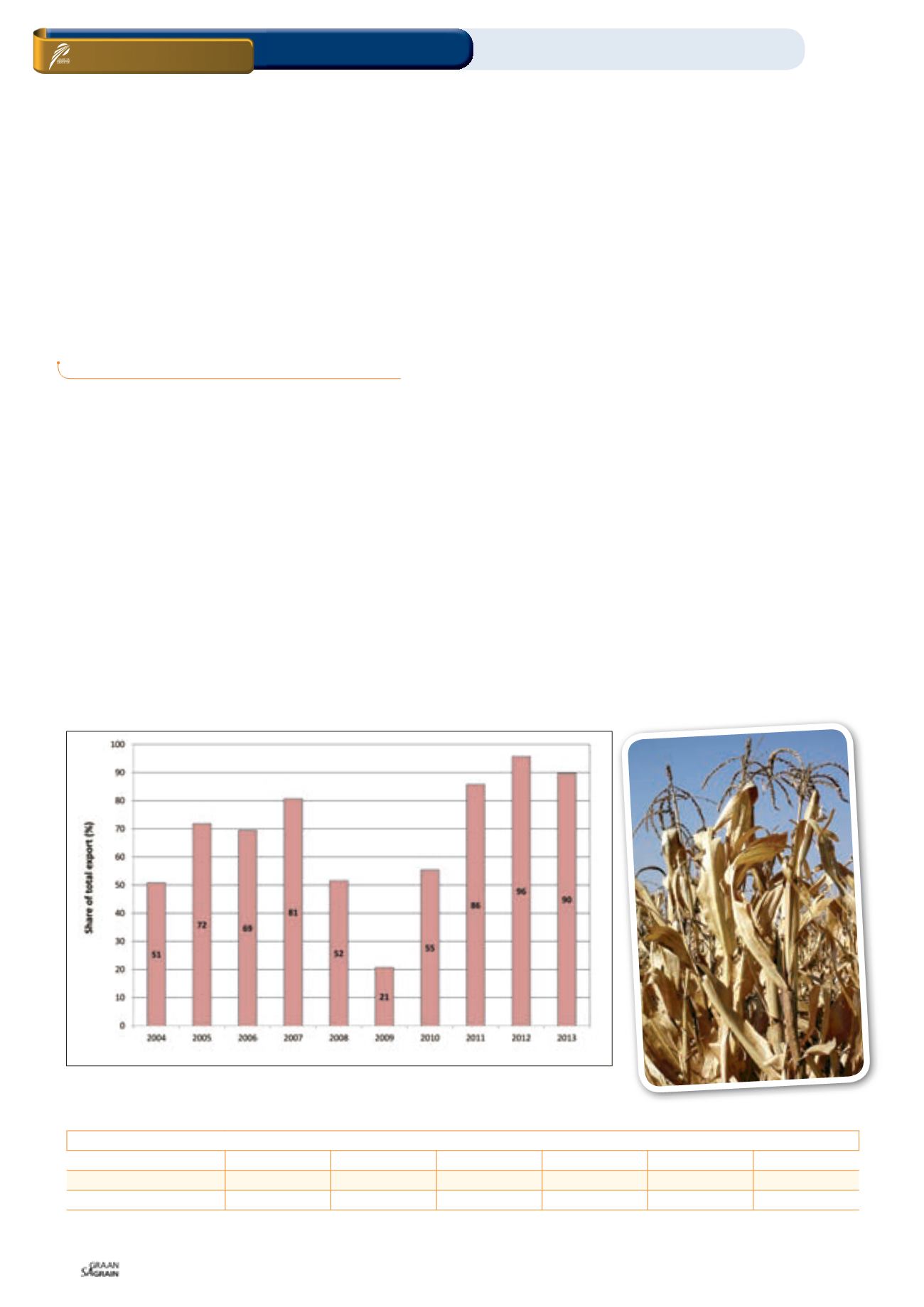
Augustus 2014
88
SouthAfricanmaizemarket structure
andEast Africanexport opportunities
under the spotlight
S
outh Africa’s 2014/2015maize export pace have been slow
relative to last year’s pace; on 18 June 2014 total exports
were 60% behind last year (at 139 313 tons, compared to
345 019 tons in 2013/2014).
There are a number of factors resulting in this slow pace, but one
notably being the soft demand in traditional South African export
markets. Thus, this article aims to view the South African export
market structures, as well as the possible export opportunities in
East Africa.
Maizemarket structure
Graph 1
shows that in the past three years, South African maize
exports becomemore concentrated; meaning that a large quantity
of South African maize have been increasingly going to a few
countries. However, this was not the case ten years ago; evidently
in 2004 the top tenSouthAfrican importing countries accounted for
approximately 51%of the total exports (ITC, 2014).
This means that South African maize export markets were wide,
hence a positive view for market development and/or expansion.
Over the years this trend continued at a volatile pace; with 2007
data showing that the top ten South African importing countries
accounted for approximately81%of the total exportedquantity, and
sobecomingmore concentrated (ITC, 2014).
In 2009, South African maize exports were wide, only 21% of the
total maize went to the top ten importing countries. However, the
past three years’ data shows that maize export markets became
highly concentrated; with the 2011, 2012 and 2013 top ten importing
countries accounting for 86%, 96% and 90%, respectively (Graph 1).
This trendbasicallyshows that agreaterpercentageofSouthAfrican
exportswent to few countries (markets became concentration).
Highmarket concentration tends to increase the level of dependency
to few importers. Evidently, the current crop (2014/2015 maize) is
showing a slow export pace, owing to slow demand from the few
ON FARM LEVEL
Maizemarket / Export opportunities / East Africa
Markets
WANDILE SIHLOBO,
economist, Industry Services, Grain SA
KENYA
2013
2014
e
2015
f
2016
f
2017
f
2017
f
Production
3,6
2,9
3,0
3,2
3,4
3,5
Consumption
3,8
3,8
3,9
4,0
4,1
4,2
Estimated imports*
0,2
0,9
0,9
1,0
0,7
0,7
TABLE 1: KENYAMAIZEPRODUCTION, CONSUMPTIONAND ESTIMATED IMPORTS (MILLION TONS).
e= estimate; f= forecast; estimated imports*=own calculations
Source: BMI (2014)
Graph 1: Trends in the concentrationof SouthAfrica’smarkets structure (top ten importing countries).
SAGrain/
Sasol Nitrophoto competition


